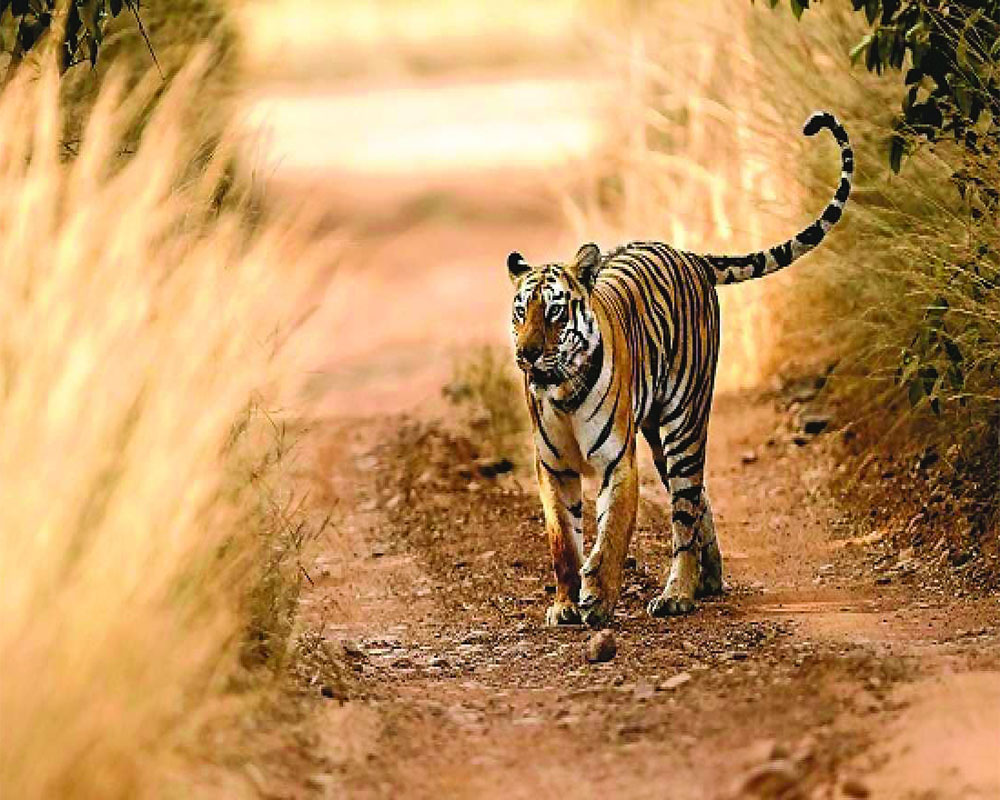Even as anti-poaching drones are increasingly being used worldwide to keep watchful eyes on endangered wildlife, India’s new policy ‘The Drone Regulations 1.0’ regulated by the Directorate General of Civil Aviation (DGCA) is set to come in the way of the country’s ambitious plan of implementing high-end gadgets for surveillance and habitat management in tiger reserves and protected habitats.
The Drone Regulations 1.0, which were released by Union Minister of Civil Aviation Suresh Prabhu, came into effect from December 1 last year. However, some of its clauses do not augur for the functioning of the wildlife agencies like the National Tiger Conservation Authority (NTCA) and Wildlife Institute of India (WII) engaged in curbing wildlife crime and habitat management including human-animal conflicts.
Sources said that the NTCA and WII, both under the Union Environment Ministry, are likely to jointly represent before the civil aviation regulator DGCA soon, with demands such as allowing it to fly the drones in night, in protected areas and along international borders sharing the boundaries of Indian tiger reserves. They also insisted that maintaining “full visual line of sight” at all times, as prescribed in the new guidelines, is impractical.
Poaching of wildlife like elephants and rhinos and tigers in India for their valuable parts has threatened the population of these species across the wildlife-rich continents, prompting rangers and wildlife advocates to fight back by taking to the sky with drones capable of spotting poachers from a distance. In India too wildlife is facing scourge of poaching which needs to be tracked through sky, said an expert from the WII.
He said while the unmanned aerial vehicles (UAVs) also known as drones, are fast becoming a necessary hi-tech tool in wildlife management all over the world, the new policy has completely ignored our entities (NTCA and WII) as security agencies. This, despite our suggestions during the drafting of the drone policy, he said.
The aim of drones is to make the system easy for conservationists and foresters to allow endangered animals to be tracked and monitored easily, and proactive way to stop poaching. This will also help keep a tab on movement of animals in the villages, preventing human-animal conflicts.
Much before the policy came, the WII under the supervision of the NTCA had already taken permission from the regulatory bodies for deploying drones fitted with GPS device and hi-resolution cameras in five tiger reserves -- Panna, Jim Corbett National Park, Kaziranga, Sundarbans and the Sathyamangalam forest of TN. However, the WII experts feel that plans to implement more drones will not be easy in view of the new policy.
“The new policy will make our task difficult to use drones in other reserves as some of its clauses do not meet our need,” said an expert from the WII.
For instance, they said poaching of wildlife increases during the night while the new rules do not allow the use of the drones after the sunset.
As the new drone policy equates NTCA and WII with any common flyer, it will make its task difficult to use the drones for anti-poaching efforts and habitat management.
“We want that we should be allowed to fly during night time, when poaching usually occurs. The present policy doesn’t allow drones near international borders. But in our case, surveillance is required along such areas also, especially in reserves such as Dudhwa, Pilibhit, Valmiki, Buxar and Sundarbans,” the official says.
The drone policy has introduced a ‘No Permission- No Takeoff’ (NPNT) clause. It means drone hardware have to be configured in such a way that unless regulatory permission is given, the drone cannot take off. It has demarcated the Indian space as Red (no-fly zones), Yellow (restricted permissions), and Green (all access). Also, drones must only be flown during daylight, while maintaining full visual line of sight at all times. The policy has also designated test sites across States to experiment. Just a few agencies engaged in security have been kept out of its ambit.
According to reports, systems combining artificial intelligence, drones and infra-red imaging have been designed to monitor animals at night in order to prevent poaching. The drones can survey large areas of difficult terrain from above, allowing ecologists to access hard to reach areas and monitor wildlife without disturbing the animals.


























